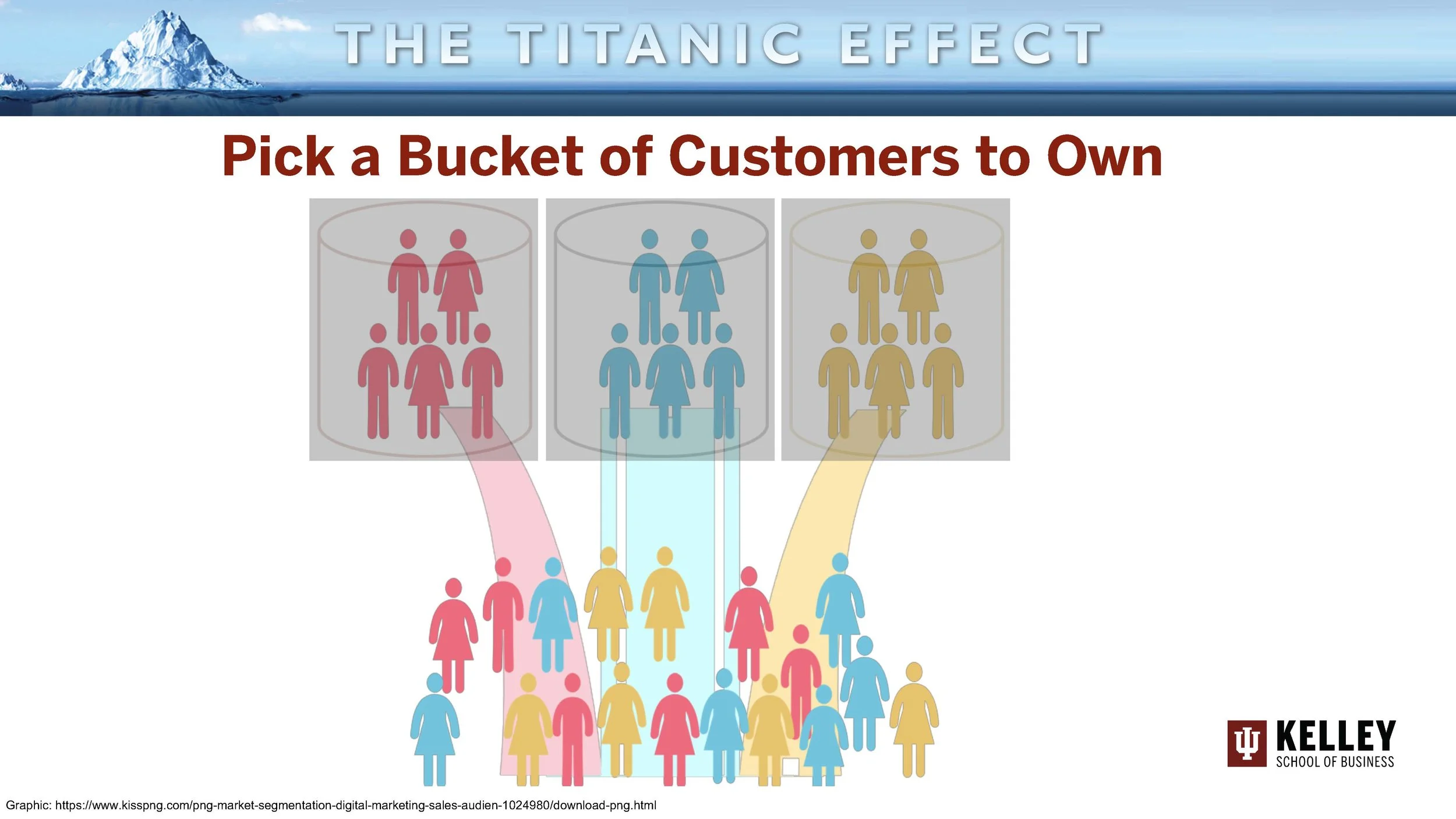Picking a marketing strategy is a lot harder for startups than it sounds. Why is that? Basically, it means making three inter-related decisions (that is, the answers to #2 and #3 change as #1 changes):
Who are you talking to? That’s your Target Market.
What are you talking to them about? This is the Frame of Reference, or the product category or the group of competitors to be dealt with.
Why should they choose you? This is your Point of Differentiation.
But notice, the first key decision is “Who is the target market?” Let’s start by defining a target market. With limited resources, most startups cannot effectively target an entire market – think of a “market” as a group of potential customers. If a startup wanted to target all mid-sized companies (i.e. those with $10 million to $1 billion), that would be approximately 180,000+ companies. It’s hard for a small and new company to reach out and touch that many potential customers. It’s also too expensive. Instead, a startup wants to focus on a smaller group of customers, a “segment” of customers. Target marketing happens when a company focuses on best meeting the needs of only ONE segment. In other words, if your answer to the question “Who would buy this?” is “Everyone,” you are heading in the wrong direction!
The key to segmenting customers is that every customer in a segment should be similar to each other but different from other segments. Typically, that means that they have different needs. It also means that they might use different terms to refer to the category and even see different competitors or substitutes. Finally, they will appreciate different aspects about why this product offering is different and better. So, defining the best target segment of customers is a critical first step because it affects both frame of reference and points of differentiation.
Here’s the real challenge – to be able to scale quickly, a startup ideally wants to be able to get 80% or 90% of its target segment to be aware of and, at least, consider trying the product offering. That means being very focused and specific about who to target from the start. But to be successful, there needs to be a plan to expand from that beachhead target segment to multiple segments and even a broader market. Here’s a short video that explains this issue and gives an example:
In our book The Titanic Effect: Successfully Navigating the Uncertainty that Sinks Most Startups, you can find out more about different ways to segment markets and how to prioritize segments for success.
Think penetrating 80%+ of a segment seems impossible? TRX estimates that it has penetrated 95% of professional sports teams with its training offering. That did not happen without some solid work. Founder Randy Hetrick says he made more than 300 sales presentations over a two-year period to secure this target segment. He made that extraordinary investment to maximize penetration in a segment that could help influence others. This is a great example of focus with diligent implementation. You can do this too.
In summary, good marketing strategy is essential for a resource-starved startup. You need to identify a target market you can win over, building on a familiar frame of reference (see our blog post about why no competition is bad) but with clear points of differentiation that will get them to pick you.
In the meantime, check out where you can pre-order The Titanic Effect. Subscribe to our mail list below and you’ll get these weekly tips sent right to your inbox.

